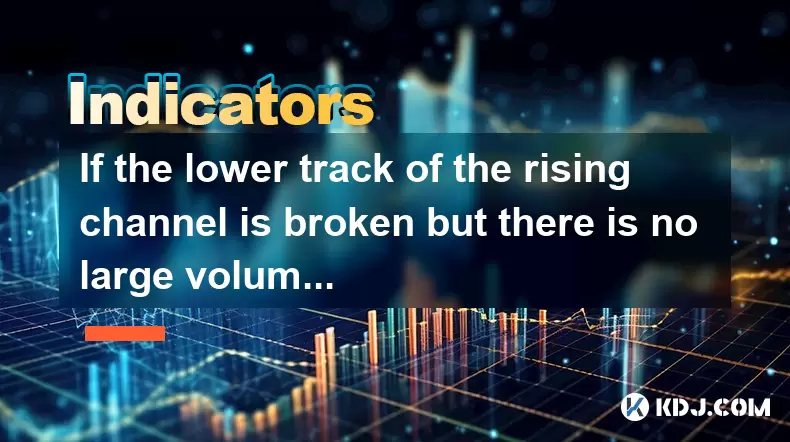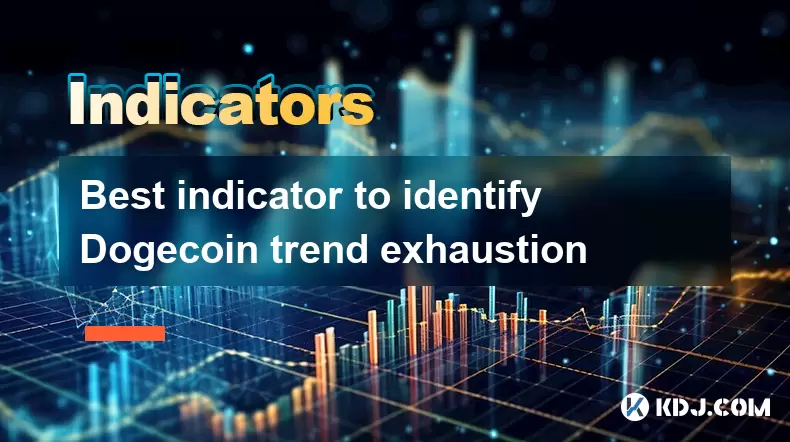-
 Bitcoin
Bitcoin $108,708.8110
0.60% -
 Ethereum
Ethereum $2,561.6057
1.91% -
 Tether USDt
Tether USDt $1.0001
-0.03% -
 XRP
XRP $2.2795
0.57% -
 BNB
BNB $662.2393
1.00% -
 Solana
Solana $153.1346
3.74% -
 USDC
USDC $1.0000
0.00% -
 TRON
TRON $0.2877
0.97% -
 Dogecoin
Dogecoin $0.1710
3.93% -
 Cardano
Cardano $0.5871
1.61% -
 Hyperliquid
Hyperliquid $39.6663
1.68% -
 Sui
Sui $2.9032
0.79% -
 Bitcoin Cash
Bitcoin Cash $496.1879
1.71% -
 Chainlink
Chainlink $13.5807
3.01% -
 UNUS SED LEO
UNUS SED LEO $9.0777
0.61% -
 Stellar
Stellar $0.2514
4.51% -
 Avalanche
Avalanche $18.1761
1.86% -
 Shiba Inu
Shiba Inu $0.0...01173
1.72% -
 Toncoin
Toncoin $2.8010
-4.23% -
 Hedera
Hedera $0.1594
3.21% -
 Litecoin
Litecoin $87.0257
-0.53% -
 Monero
Monero $319.1217
1.79% -
 Polkadot
Polkadot $3.3853
0.68% -
 Dai
Dai $0.9999
-0.01% -
 Ethena USDe
Ethena USDe $1.0003
0.02% -
 Bitget Token
Bitget Token $4.3420
-0.97% -
 Uniswap
Uniswap $7.3772
1.39% -
 Aave
Aave $286.6277
5.61% -
 Pepe
Pepe $0.0...09994
2.33% -
 Pi
Pi $0.4589
1.76%
If the lower track of the rising channel is broken but there is no large volume, should you wait for a rebound?
A rising channel break with low volume in crypto may signal a temporary pullback, not a trend reversal, offering traders a potential rebound opportunity.
Jun 30, 2025 at 09:42 pm

Understanding the Rising Channel Pattern
A rising channel is a technical analysis pattern formed by drawing two parallel lines that connect a series of higher lows and higher highs. The upper boundary acts as resistance, while the lower boundary serves as support. Traders often use this pattern to identify potential continuation or reversal points in an asset's price movement.
In the context of cryptocurrency trading, rising channels are particularly useful due to the high volatility and strong trend-following behavior of digital assets. When the price moves within a rising channel, it indicates a bullish trend. However, when the lower track of the rising channel is broken, it raises concerns about whether the uptrend has ended or if the breakout is a false signal.
Key Insight: A broken lower boundary doesn't automatically confirm a trend reversal, especially if volume remains low.
What Does It Mean When the Lower Track Is Broken?
When the price closes below the lower support line of a rising channel, it may suggest weakening buyer momentum. However, not every such break leads to a significant downtrend. In many cases, especially in crypto markets, price can temporarily pierce the lower boundary before resuming its original direction.
It’s important to analyze the context of the breakout. If the break occurs with low trading volume, it might indicate a lack of conviction from sellers. This could imply that the move is not supported by strong market sentiment and may be followed by a rebound back into the channel.
Important Note: Always check for candlestick patterns and nearby support levels after a break to assess whether a bounce is likely.
Volume Analysis: Why Low Volume Matters
Volume is a critical component in confirming any technical breakout. High volume during a breakdown typically signals strong selling pressure and increases the likelihood of a sustained downtrend. Conversely, a break below the rising channel with low volume suggests that institutional or large traders aren’t actively pushing the price down.
This can create an opportunity for contrarian traders who look for signs of accumulation or rejection at key levels. In crypto, where whale activity can heavily influence prices, a lack of volume during a breakdown may indicate that big players are not exiting their positions aggressively.
- Check the average volume over the past few days to compare with the current session.
- Look for divergences between price action and on-chain volume indicators.
- Monitor order book depth near the broken support level for signs of buying interest.
How to Evaluate Whether to Wait for a Rebound
After observing a low-volume break below the rising channel, traders need to perform a multi-layered analysis before deciding whether to wait for a rebound. Here’s how to approach it step-by-step:
- Identify the previous swing low inside the channel to see if the broken support is now acting as resistance.
- Use Fibonacci retracement tools to determine potential bounce zones.
- Watch for bullish candlestick patterns like hammer, morning star, or engulfing candles forming near the broken support zone.
- Analyze RSI and MACD indicators for signs of oversold conditions or bullish divergence.
If these elements align, it strengthens the case for waiting for a rebound rather than immediately shorting the asset or closing long positions.
Risk Management Considerations
Even if you decide to wait for a potential rebound, proper risk management is crucial. Crypto markets are known for sudden reversals and fakeouts, so entering without a plan can lead to significant losses.
Here’s how to structure your position safely:
- Set a stop-loss just below the recent swing low to protect against further downside.
- Use a reward-to-risk ratio of at least 2:1 when targeting a return to the channel.
- Consider partial entries to test the strength of the bounce before committing more capital.
Avoid placing all-in trades based solely on chart patterns. Always incorporate multiple time frame analysis and consider broader market conditions.
Frequently Asked Questions (FAQs)
Q: Can a rising channel still be valid after a low-volume break?
Yes, especially if the price quickly reclaims the broken support level. The integrity of the channel depends more on how the market reacts post-break rather than the initial drop.
Q: Should I close my long position if the lower track breaks but volume is low?
Not necessarily. You can trail your stop-loss and monitor for signs of a bounce. Closing prematurely may cause you to miss out on a potential recovery.
Q: How long should I wait for a rebound after a low-volume break?
There’s no fixed timeframe, but most traders watch for a reaction within 2–3 candlesticks on the hourly or 4-hour chart. If no reversal happens within that window, reassess the situation.
Q: Are rising channels reliable in cryptocurrency markets?
Rising channels are widely used in crypto trading and can be effective when combined with volume and other technical indicators. However, they work best in trending markets and less so in choppy or sideways conditions.
Disclaimer:info@kdj.com
The information provided is not trading advice. kdj.com does not assume any responsibility for any investments made based on the information provided in this article. Cryptocurrencies are highly volatile and it is highly recommended that you invest with caution after thorough research!
If you believe that the content used on this website infringes your copyright, please contact us immediately (info@kdj.com) and we will delete it promptly.
- Bitcoin Wallet Hack? Coinbase Exec Sounds the Alarm on $8B Whale Movement
- 2025-07-07 18:30:12
- Mercado Bitcoin, Tokenization, and XRP Ledger: A Latin American Power Play
- 2025-07-07 18:30:12
- Ripple's RLUSD: Revolutionizing Cross-Margin Trading for Institutions
- 2025-07-07 18:35:12
- Babylon, Bitcoin, and the EVM Mainnet: A New Era for BTCFi?
- 2025-07-07 16:30:11
- Queen Elizabeth Coin Sells for £31,000: A Royal Fortune in Your Pocket?
- 2025-07-07 16:30:11
- XRP Price Check: Will Resistance Trigger a July Drop?
- 2025-07-07 17:10:12
Related knowledge

How to trade Dogecoin based on funding rates and open interest
Jul 07,2025 at 02:49am
Understanding Funding Rates in Dogecoin TradingFunding rates are periodic payments made to either long or short traders depending on the prevailing market conditions. In perpetual futures contracts, these rates help align the price of the contract with the spot price of Dogecoin (DOGE). When funding rates are positive, it indicates that long positions p...

What is the 'God Mode' indicator for Bitcoincoin
Jul 07,2025 at 04:42pm
Understanding the 'God Mode' IndicatorThe 'God Mode' indicator is a term that has emerged within cryptocurrency trading communities, particularly those focused on meme coins like Dogecoin (DOGE). While not an officially recognized technical analysis tool or formula, it refers to a set of conditions or patterns in price action and volume that some trader...

How to spot manipulation on the Dogecoin chart
Jul 06,2025 at 12:35pm
Understanding the Basics of Chart ManipulationChart manipulation in the cryptocurrency space, particularly with Dogecoin, refers to artificial price movements caused by coordinated trading activities rather than genuine market demand. These manipulations are often executed by large holders (commonly known as whales) or organized groups aiming to mislead...

Bitcoincoin market structure break explained
Jul 07,2025 at 02:51am
Understanding the Dogecoin Market StructureDogecoin, initially created as a meme-based cryptocurrency, has evolved into a significant player in the crypto market. Its market structure refers to how price action is organized over time, including support and resistance levels, trend lines, and patterns that help traders anticipate future movements. A mark...

What is the significance of a Dogecoin engulfing candle pattern
Jul 06,2025 at 06:36am
Understanding the Engulfing Candle Pattern in CryptocurrencyThe engulfing candle pattern is a significant technical analysis tool used by traders to identify potential trend reversals in financial markets, including cryptocurrencies like Dogecoin. This pattern typically consists of two candles: the first one is relatively small and indicates the current...

Best indicator to identify Dogecoin trend exhaustion
Jul 07,2025 at 11:29am
Understanding Dogecoin Trend ExhaustionIdentifying trend exhaustion in Dogecoin (DOGE) is crucial for traders aiming to avoid late entries or potential reversals. Trend exhaustion occurs when a prevailing price movement loses momentum, often leading to a consolidation phase or reversal. In the volatile world of cryptocurrencies like Dogecoin, understand...

How to trade Dogecoin based on funding rates and open interest
Jul 07,2025 at 02:49am
Understanding Funding Rates in Dogecoin TradingFunding rates are periodic payments made to either long or short traders depending on the prevailing market conditions. In perpetual futures contracts, these rates help align the price of the contract with the spot price of Dogecoin (DOGE). When funding rates are positive, it indicates that long positions p...

What is the 'God Mode' indicator for Bitcoincoin
Jul 07,2025 at 04:42pm
Understanding the 'God Mode' IndicatorThe 'God Mode' indicator is a term that has emerged within cryptocurrency trading communities, particularly those focused on meme coins like Dogecoin (DOGE). While not an officially recognized technical analysis tool or formula, it refers to a set of conditions or patterns in price action and volume that some trader...

How to spot manipulation on the Dogecoin chart
Jul 06,2025 at 12:35pm
Understanding the Basics of Chart ManipulationChart manipulation in the cryptocurrency space, particularly with Dogecoin, refers to artificial price movements caused by coordinated trading activities rather than genuine market demand. These manipulations are often executed by large holders (commonly known as whales) or organized groups aiming to mislead...

Bitcoincoin market structure break explained
Jul 07,2025 at 02:51am
Understanding the Dogecoin Market StructureDogecoin, initially created as a meme-based cryptocurrency, has evolved into a significant player in the crypto market. Its market structure refers to how price action is organized over time, including support and resistance levels, trend lines, and patterns that help traders anticipate future movements. A mark...

What is the significance of a Dogecoin engulfing candle pattern
Jul 06,2025 at 06:36am
Understanding the Engulfing Candle Pattern in CryptocurrencyThe engulfing candle pattern is a significant technical analysis tool used by traders to identify potential trend reversals in financial markets, including cryptocurrencies like Dogecoin. This pattern typically consists of two candles: the first one is relatively small and indicates the current...

Best indicator to identify Dogecoin trend exhaustion
Jul 07,2025 at 11:29am
Understanding Dogecoin Trend ExhaustionIdentifying trend exhaustion in Dogecoin (DOGE) is crucial for traders aiming to avoid late entries or potential reversals. Trend exhaustion occurs when a prevailing price movement loses momentum, often leading to a consolidation phase or reversal. In the volatile world of cryptocurrencies like Dogecoin, understand...
See all articles

























































































